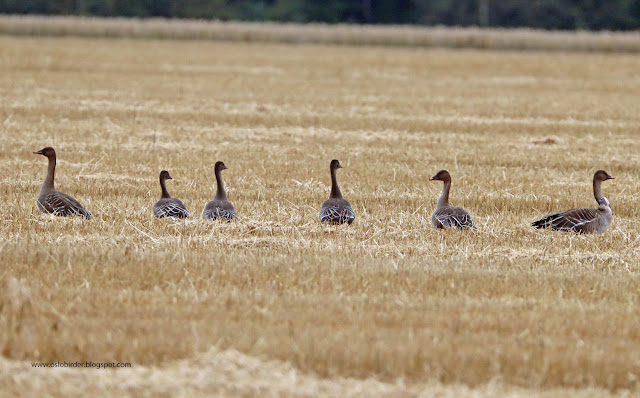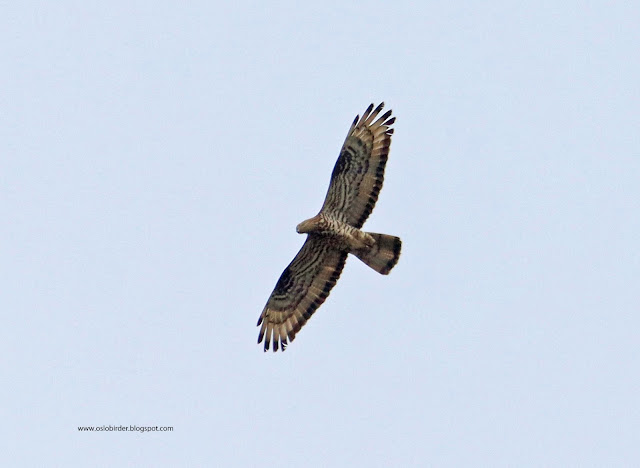After many days of wind and/or rain the more settled and
sunny weather today looked like it could be good for birds of prey (bops). I checked out my
breeding birds first. The two Honey Buzzard chicks are now a month old and growing
quickly but still have at least two more weeks until fledging. To highlight how
late this nest is, a migrating juvenile was seen at Huk today, see picturehere.
The young Hobbies have been out of the nest a good while but
are not yet independent. They are good fliers and I have seen them catching
dragonflies but they still spend there time waiting in tree tops for the
parents to bring birds which results in lots of begging and chasing after the
parents to take the prey.
The day’s highlight though came from some good old sky
gazing in Maridalen. I had eight species of raptor with the first highlight
coming whilst watching a male Honey Buzzard (the same as yesterday) right over
my head which suddenly started calling. As we were away from the nest I thought
maybe there was a flying juvenile nearby and scanned. But it wasn’t another
Honey that had caused him to call but three other species that were all flying
around him: Common Buzzard, Osprey and Goshawk! This was quite the sight and
sound and would have rounded the day off very nicely indeed but the day was
still young so I kept on scanning.
I mostly scanned with my naked eye as I've had enough of distant spots that I struggle to ID but every
now and again scanned more distantly with my bins. I picked up a medium sized
raptor heading south along the ridge 3-4km to the east. Switching to the scope
I had it in a glide flight in profile and initially thought HB until it
thermalled a couple of times and had a forked tail – it was a Kite. The
distance was by now closer to 5km but in the scope I could see the tail was red
and species #198 for #Oslo2024 was in the bag. That it wasn’t one of the
species I had listed up yesterday showing that there is so much out there to
see.
This is more fourth Red Kite in Maridalen, and Oslo, and
each one is further away but I think I have now reached the limit for what is
possible to ID.
Ebird checklist here.
I took far too many pictures today and many of them I think
will be quite good. They will have to come later though as right now I have
only had time to look at the absolute worst photos I took 😉
 |
| Red Kite (rødglente) at 4-5km range. Counts as a record shot IMO 😂 |





















































